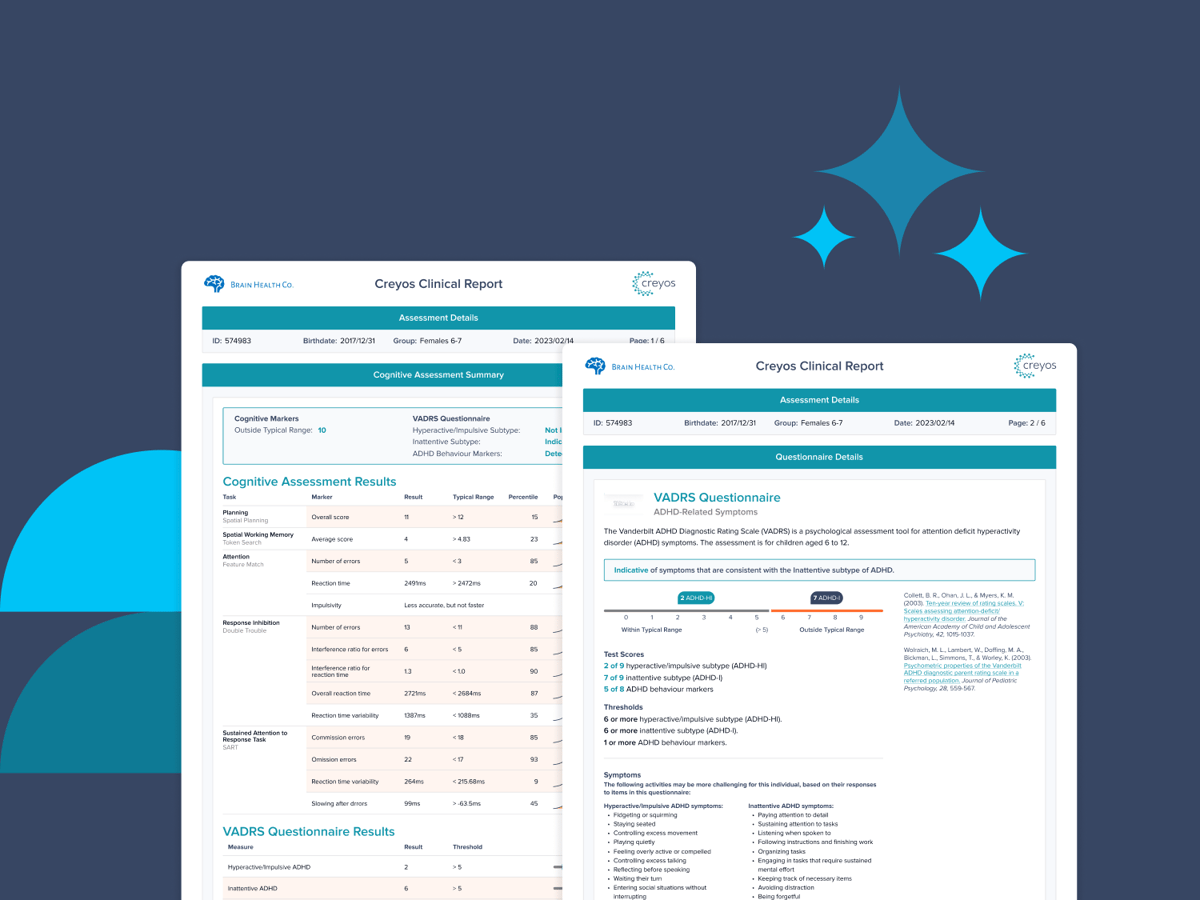
10 Behavioral Health Assessments to Identify Patient Needs
Misdiagnosis is a common reality for patients with mental...
Read article
Get a complete picture of patients who exhibit traits associated with autism spectrum, including Asperger syndrome, using this self-report scale for people ages 16+.

Administer the AQ questionnaire alongside cognitive tasks and get real-time results—all from the same platform.

Offer the Autism Spectrum Quotient in person or at home, improving access to assessment and treatment.

Measure cognitive performance to help identify appropriate tools, resources, and systems to support patients with autism.
Offer the AQ in conjunction with additional behavioral health assessments and cognitive function tasks in Creyos Health to help guide patient care plans. Take a look at the complete selection of questionnaires available in Creyos.
Review our guide below for a complete list of standardized questionnaires available in Creyos.

The Autism Spectrum Quotient questionnaire offered through Creyos is designed primarily for adults with autistic traits who are not severely intellectually impaired.
When administered alongside measures of cognitive performance, it allows clinicians to:

Patients can complete the AQ questionnaire in person through the Creyos Health platform on an in-clinic device or at home through a provided link.
The AQ scale is self-administered and contains 50 questions across five domains: social skill, attention switching, attention to detail, communication, and imagination.
Creyos Health automatically scores AQ results and provides reports. Higher scores indicate a greater incidence of autistic traits.
Healthcare providers can discuss results with patients and support holistic wellbeing by offering testing, management, and resources for comorbid conditions, such as ADHD, anxiety, and depression.

With increased awareness of autism, healthcare providers are seeing more patients with the condition. However, while individual characteristics strongly affect patient outcomes, they are rarely measured, which makes it difficult to meet a patient’s specific needs.
The Autism Spectrum Quotient (AQ) is a behavioral health assessment that fills this data gap with a quick measure of traits associated with autism. Learn more about offering the AQ alongside cognitive function tasks with Creyos Health.
Source: Russel et al., 2021
Autism, also known as autism spectrum disorder, is a neurodevelopmental condition characterized by challenges in social interaction and communication, as well as inflexible and repetitive behavioral patterns.
The AQ scale is commonly used by primary care providers, mental health professionals, neurologists, occupational therapists, and other healthcare professionals, researchers, and individuals to measure autistic traits in adults
The AQ scale evaluates traits associated with autism across five domains: social skill, attention switching, attention to detail, communication, and imagination.

Misdiagnosis is a common reality for patients with mental...
Read article

About half of those who experience a mental illness during...
Read article

The prevalence of attention deficit hyperactivity disorder...
Read article